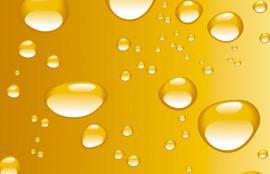There are different analytical techniques to carry out a complete analysis of the condition of the grease used in bearings.
Some of the techniques and parameters that must be analysed to determine the condition of the greases from different points of view.
Appearance
The appearance is a very important parameter when evaluating the condition of the grease. It includes the subjective assessment of its colour, texture and odour.
The colour of the used grease is compared with new grease to determine the conditions the grease is working in, in terms of presence of contaminants and its state of deterioration. The texture indicates the presence of contaminants such as dust, wear particles, degradation products, etc. and the odour, like the colour, provides information about the conditions in which the grease is working.
Remaining life (ASTM D7527)
The analytical technique for determining the remaining concentration of antioxidants in the sample of grease in use is the standard ASTM D7527. By applying a positive potential between ranges of potentials (0.0-1.7 volts) and speeds of 0.1 V/sec the compounds of interest are oxidised, the antioxidants.
The useful life of the grease is related to its stability against oxidation and, consequently, the antioxidant capacity that it still has. The identification of the remaining concentration of antioxidant makes it possible to evaluate the behaviour of the grease in the bearing, and establish the appropriate periods of regreasing.
Liquid contamination (ASTM D6304-C or ASTM D4377)
Liquid contamination is one of the main causes of failure in bearings, so it is essential to monitor it regularly. The water concentration must be as low as possible to ensure satisfactory system operation.

Equipment for determining the water content in a grease using coulometric KF titration.
Infrared spectrum
Infrared spectroscopy enables us to determine the fingerprint of the grease. It helps us establish whether the grease is being used, if it is mixed with another, if there are contaminants such as water or if it is degraded. It also determines the type of thickener that is being used and its concentration, as well as the oxidation products generated during its use. It is a very useful technique for verifying the condition of the deterioration of the grease due to oxidation.
Metal content (ASTM D7303)
Using atomic emission spectroscopy (ICP) it is possible to determine both the type and concentration of the metals of the package of additives, contaminants and wear metals produced in the machine.
Once the metals present in the grease are known, it is possible to determine whether the grease has been mixed in use with another different grease (thickened with lithium, calcium, etc.), as well as the type of contaminants that are present in the grease (for example silica), as well as the wear metals (iron, copper, etc.).
Concentration of wear particles in ppm
Unlike the atomic emission spectroscopy (ICP) analysis that measures the particles smaller than 5-10 microns, this analysis determines (in parts per million) the total concentration of iron particles and helps to determine the severity of the wear in the bearing.
Consistency (ASTM D7918)
A change in the consistency of a grease may indicate problems with its components, such as a mixture of incompatible thickeners, elevated levels of contamination or wear, or a high consumption of antioxidants.
This analysis makes it possible to monitor the evolution and trends of the consistency properties of the grease, which can help predict possible faults in the component lubricated before they become evident, so corrective action can be taken.
This technique, in conjunction with the identification of degree of wear, contamination and deterioration properties of a grease, is essential for a satisfactory Condition Monitoring program.







